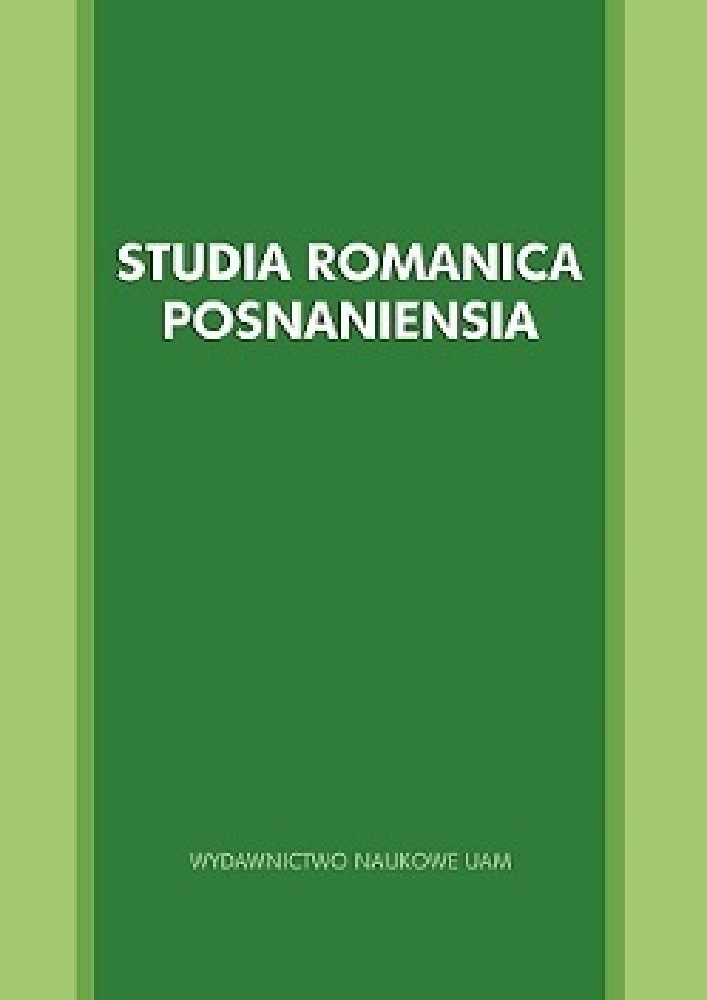Abstrakt
The present article examines how Antonella Cilento reinvents the myth of Philomela in Lisario o il piacere infinito delle donne, Premio Strega finalist (2014) and winner of Boccaccio Prize (2014). After evidencing the narrative aspects of Ovid’s myth – the rape; the cutting out of the tongue depriving the raped woman of her voice; the expression of the violence she experienced – the analysis focuses on how Cilento overturns the myth by interweaving Ovid’s tale with the topos of Sleeping Beauty. Despite her silencing, Lisario discovers and appropriates the pleasure that can be drawn from her body. The paper concludes by considering how the protagonist finds new and non violent ways to express herself and relate to future generations of women.Bibliografia
Cavarero, A. (2010). A più voci. Filosofia dell’espressione vocale. Milano: Feltrinelli.
Cilento, A. (2014). Lisario o il piacere infinito delle donne. Milano: Mondadori.
De Carneri, M. (2015). Il fallo e la maschera. L'inconscio patriarcale della psicanalisi. Milano: Mimesis.
Doglio, M.L. (2000). Letter Writing, 1350-1650. In L. Panizza, S. Wood (Eds.), A History of Women’s Writing in Italy (pp. 13-24). Cambridge: Cambridge University Press.
Douglas, M. (1996). "atural Symbols. Exploration in Cosmology. London: Routledge.
Dunn, L., Jones, N. (1994). Embodied Voices: Representing Female Vocality in Western Culture. Cambridge: Cambridge University Press.
Giorgio, A. (1993). Narrative as Verbal Performance: Énonciation and Énoncé in Fabrizia Ramondino’s “La signora di Son Batle”. Italian Studies, 48, 86-106.
Irigaray, L. (1985). This Sex Which is "ot One. New York: Cornell University Press.
Irigaray, L. (1989). Sessi e genealogie, trad. L. Muraro. Milano: La Tartaruga.
Joplin Klindienst, P. (2002). The Voice of the Shuttle Is Ours. In L.K. McClure (Ed.), Sexuality and Gender in the Classical World (pp. 259-86). Oxford: Blackwell Publisher.
Lévi-Strauss, C. (1969). The Elementary Structures of Kinship, trad. J. Harle Bell, J.R. von Sturner, R. Needham. Boston: Beacon Press.
Loraux, N. (1991). Tragic Ways of Killing a Woman, trad. A. Forster. Cambridge Mass.: Harvard University Press.
Marder, E. (1992). Disarticulated Voices: Feminism and Philomela. Hypatia, 7, 148-166.
Miller, N.K. (1986). Arachnologies: The Woman, the Text, and the Critic. In N.K. Miller (Ed.), The Poetics of Gender (pp. 270-295). New York: Columbia University Press.
Ovidio, P. (2015). Metamorfosi. Torino: Einaudi.
Segal, C. (1993). Philomela’s Web and the Pleasures of the Text: Reader and Violence in the Metamorphoses of Ovid. In I.J.F. de Jong, P. Sullivan (Eds.), Modern Critical Theory and Classical Literature (pp. 257-280). New York: Leiden.
Trivellini, S. (2015). The Myth of Philomela from Margaret Atwood to… Chaucer: Contexts and Theoretical Perspectives. Interférences littéraires, 17, 85-99.
Williams, J. (1997). Interpreting "ightingales. Gender, Class and Histories. Sheffield: Sheffield Academic Press.
Licencja
- Autor oświadcza, że przysługują mu osobiste i majątkowe prawa autorskie do Utworu oraz że nie są one ograniczone w zakresie objętym niniejszą Umową, oraz że utwór jest dziełem oryginalnym i nie narusza majątkowych lub osobistych praw autorskich innych osób.
- Autor udziela Uniwersytetowi im. Adama Mickiewicza w Poznaniu niewyłącznej i nieodpłatnej licencji na korzystanie z Utworu bez ograniczeń terytorialnych i przez czas nieokreślony na następujących polach eksploatacji:
2.1. wytwarzanie określoną techniką egzemplarzy Utworu, w tym techniką drukarską, reprograficzną, zapisu magnetycznego oraz techniką cyfrową;
2.2. wprowadzanie do obrotu, użyczenie lub najem oryginału albo egzemplarzy Utworu;
2.3. publiczne wykonanie, wystawienie, wyświetlenie, odtworzenie oraz nadawanie i reemitowanie, a także publiczne udostępnianie Utworu w taki sposób, aby każdy mógł mieć do niego dostęp w miejscu i w czasie przez siebie wybranym;
2.4. włączenie Utworu w skład utworu zbiorowego;
2.5. wprowadzanie Utworu w postacie elektronicznej na platformy elektroniczne lub inne wprowadzanie Utworu w postaci elektronicznej do Internetu, Intranetu, Extranetu lub innej sieci;
2.6. rozpowszechnianie Utworu w postaci elektronicznej w Internecie, Intranecie, Extranetu lub innej sieci, w pracy zbiorowej jak również samodzielnie;
2.7. udostępnianie Utworu w wersji elektronicznej w taki sposób, by każdy mógł mieć do niego dostęp w miejscu i w czasie przez siebie wybranym, w szczególności za pośrednictwem Internetu, Intranetu, Extranetu lin innej sieci;
2.8. udostępnianie Utworu zgodnie z wzorcem licencji Attribution-NonCommercial-ShareAlike 4.0 International (CC BY-NC-SA 4.0) lub innej wersji językowej tej licencji lub którejkolwiek późniejszej wersji tej licencji, opublikowanej przez organizację Creative Commons. - Autor zezwala Uniwersytetowi im. Adama Mickiewicza w Poznaniu na:
3.1. nieodpłatne korzystanie i rozporządzanie prawami do opracowań Utworu i tymi opracowaniami.
3.2. wysyłanie metadanych Utworu oraz Utworu do komercyjnych i niekomercyjnych baz danych indeksujących czasopisma. - Autor upoważnia i zobowiązuje Uniwersytet im. Adama Mickiewicza w Poznaniu do udzielania osobom trzecim dalszych licencji (sublicencji) do Utworu oraz do innych materiałów, w tym utworów zależnych lub opracowań zawierających lub powstałych w oparciu o Utwór, przy czym postanowienia takich sublicencji będą tożsame z wzorcem licencji Attribution-NonCommercial-ShareAlike 4.0 International (CC BY-NC-SA 4.0) lub innej wersji językowej tej licencji lub którejkolwiek późniejszej wersji tej licencji, opublikowanej przez organizację Creative Commons Tym samym uprawnia wszystkich zainteresowanych do korzystania z utworu wyłącznie w celach niekomercyjnych pod następującymi warunkami:
4.1. uznanie autorstwa czyli obowiązek podania wraz z rozpowszechnionym utworem informacji, o autorstwie tytule, źródle (odnośniki do oryginalnego utworu, doi) oraz samej licencji;
4.2. na tych samych warunkach, wolno rozpowszechniać utwory zależne jedynie na licencji identycznej to tej, na jakiej udostępniono utwór oryginalny. - Uniwersytet im. Adama Mickiewicza w Poznaniu jest zobowiązany do:
5.1. udostępniania Utworu w taki sposób, aby każdy mógł mieć do niego dostęp w miejscu i w czasie przez siebie wybranym bez ograniczeń technicznych;
5.2. poprawnego informowania osób, którym Utwór będzie udostępniany o udzielonych im sublicencjach w sposób umożliwiający odbiorcom zapoznanie się z nimi.
Pozostałe postanowienia
- Uniwersytet im. Adama Mickiewicza w Poznaniu zachowuje prawo do czasopisma jako całości (układ, forma graficzna, tytuł, projekt okładki, logo itp.).
